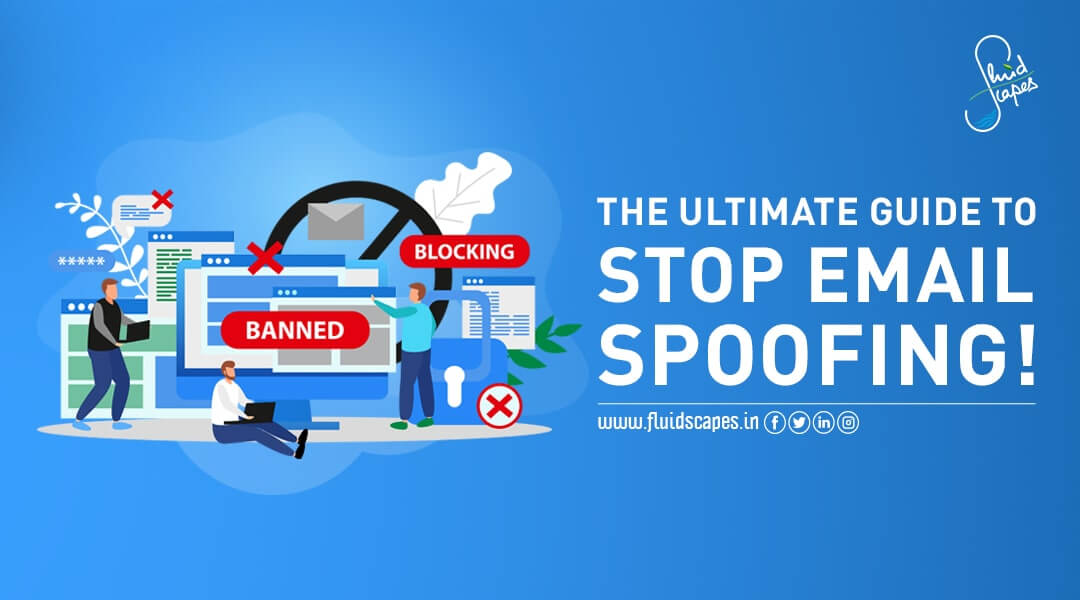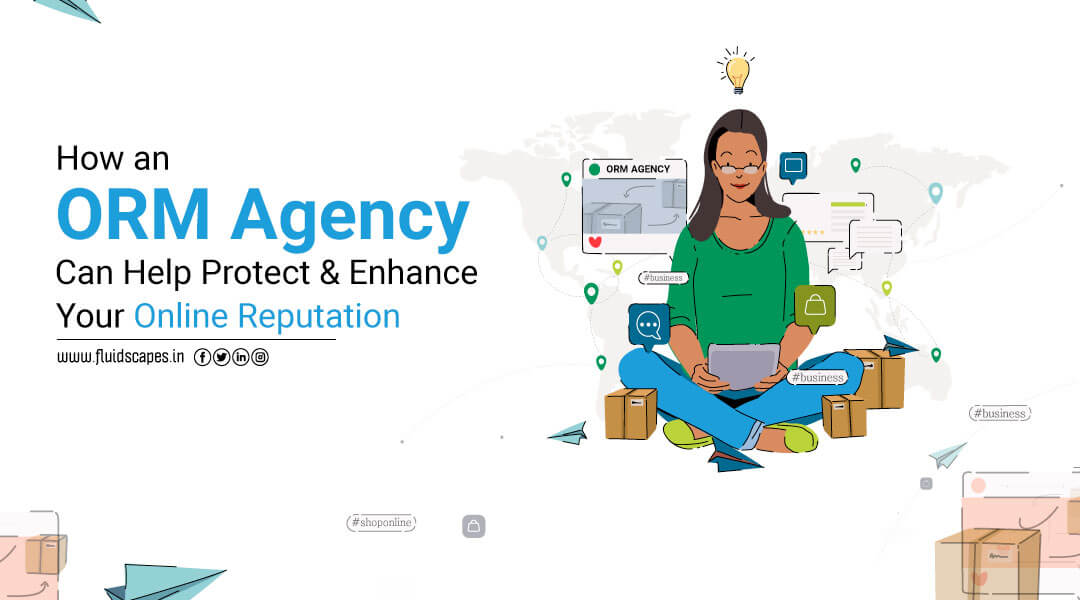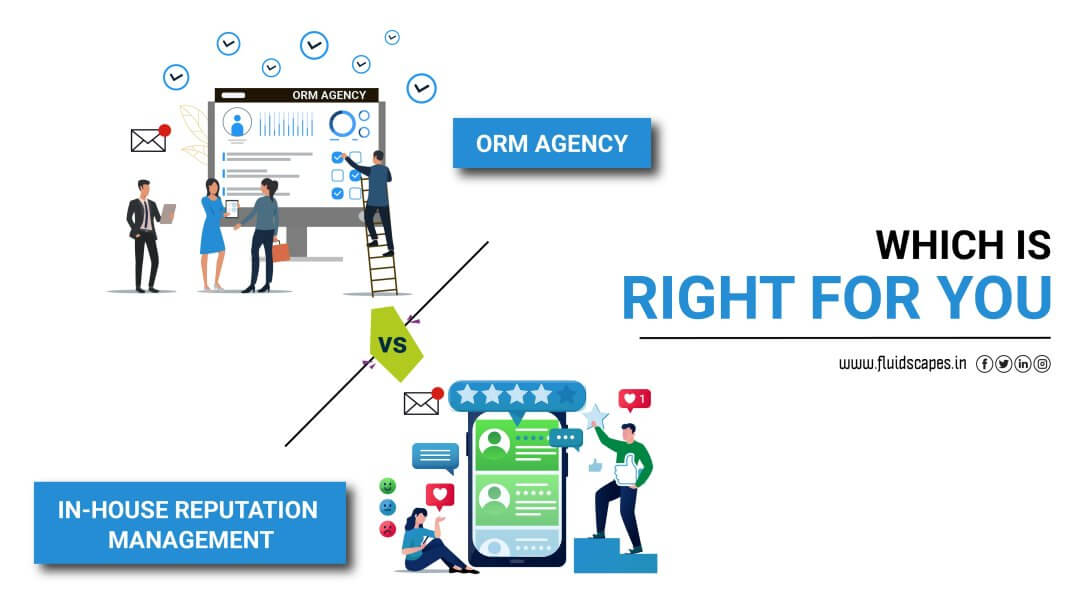
The ultimate guide to stop email spoofing!
As email evolved to be the primary communication method in the office and personal space bringing the world closer to us, it also gave fraudsters leverage to devise new ways to deceive and swindle.
You, I, and numerous others have faced or become victims of such apparently helping or beneficial but actually malicious emails and ended up remitting large sums of money, bank account details or other valuable information to imposters.
There is a growing affliction of such menace called email spoofing, which not only robs people but businesses and institutions as well. According to a recent study, since March 2020, 81 percent of firms all around the world have seen an upsurge in email spoofing assaults that makes up at least 25% of all data breaches. That elevates email spoofing from a nuisance to a real threat and brings up the requirement to understand and prevent this threat.
ORM, Virtual Financial Services, ATL/BTL Marketing, Project Management, Brand Management, SEO, Web & App Development and much more.
*Your details are safe with us. We do not share or spam our valuable visitors*
Interested to find out how we could help you? Drop in your email and number and we’ll get right back!
What is email spoofing?
Spoofing is a technique used by hackers to fool people (email users) into thinking a message came from someone or some place they know or can trust. The sender forges email headers so that the received mail contains a source id which is almost the same as one you are familiar with and believe at face value.
Users will not notice the counterfeit sender in a message until they examine the header more attentively. They are more likely to trust a name they are familiar with. As a result, they’ll click harmful links, open virus attachments, send sensitive information, and even wire money to the company.
Lookalike domains and domain spoofing are frequently used in these crimes, but two-third of all email spoofing attacks employ display name spoofing. This technique is so widely used because most people access mails on mobile these days. Mobile devices have much smaller screens, which can’t show the sender’s email ID. Instead it shows a name (a friend or boss) and/or a photo that triggers an urgency to follow the instruction.
Another term frequently used in the context of email spoofing is phishing. Phishing is also a harmful email that uses the spoofing technique to defraud the users, but its modus operandi is different. It uses embedded links, malwares, or social engineering to steal critical information, login credentials, etc.
How email spoofing works?
Impersonation is the main theme in email spoofing, which is performed by a fraudster by setting up or compromising an SMTP server. This makes it possible for them to change the ‘From,’ ‘Reply-To,’ and ‘Return-Path’ email addresses so that their phishing emails appear to be genuine messages from the person or company they’re impersonating.
Email spoofing example
A most common type of email spoofing attack involves an email seemingly sent from PayTM or any other online wallet company that you are using. The notification says that if you do not click a link, authenticate on the site, and change their password, your account will be suspended. If you react as directed, which is very natural, by entering the credentials, the attacker gets access to your PayTM account and transfers money to their account.
Another real-life example of email spoofing is known as Business Email Compromise or CEO fraud. In this, a company executive might receive a mail purportedly from his/her boss or a higher executive asking to share some information or make some payment. It might look as simple as this – the deal is through. Send x amount of money to this link within the banking hours today.
The message carries a sense of urgency, and the unsuspecting employee merely follows instructions without checking the sender’s id minutely.
How to stop email spoofing?
While it’s important to have spoofing reporting tools and awareness training among the staff to detect both inbound and outbound impersonation attempts, they will not be sufficient on their own.
So, how can you better defend yourself from phishing emails that are sent to your employees? How can you keep your own brand and personnel from being impersonated in email assaults against your customers, organisations, and individuals?
Protect from incoming spoofing attacks.
The best defense will be to prevent the attacks from ever reaching employees.
Email security protection: Use of cloud based email systems that also incorporate traditional email security tools detect and block a great majority of incoming emails containing dangerous links or attachments.
Identity based protections: These solutions automatically detect and eliminate more complex email attacks, phishing schemes, and BEC scams, regardless of their source, including those launched from cloud platforms or compromised accounts.
Training and reporting: Fraudsters are always busy inventing new ways to puncture your defense. The best strategy to keep imposters at bay is to train your employees and preach them to become aware and alert, so that they remain watchful and can identify spoofed emails.
Protect your mails from getting impersonated
Protecting your mail id from getting spoofed is equally important as it might be used to defraud your customers, suppliers, associates and friends. Following are the standard email authentication systems that can safeguard your business mail ids from getting spoofed.
SPF: SPF (Sender Policy Framework) helps organizations to designate the IP addresses that can be used to send emails on their behalf. Receiving servers scan the DNS records connected with your sending domain to see if the IP address used to send the email is specified in the SPF record during an SPF check. The email will fail authentication if it isn’t.
DKIM: DKIM (DomainKeys Identified Mail) ensures all outgoing mails to have an encrypted signature in their headers, which are decrypted by the email servers at the receiving end to prevent tampering of the original message.
DMARC: DMARC (Domain-based Message Authentication, Reporting, and Conformance) is an email authentication standard that works in tandem with SPF and DKIM to allow only legitimate/trustworthy emails and prevent the spoofed emails from reaching your inbox.
ORM, Virtual Financial Services, ATL/BTL Marketing, Project Management, Brand Management, SEO, Web & App Development and much more.
*Your details are safe with us. We do not share or spam our valuable visitors*
Interested to find out how we could help you? Drop in your email and number and we’ll get right back!
Source- Fluidscapes
We are one of the best digital marketing companies in India that provides online reputation management services to all types of organizations. We assist businesses to stay on top of the game by leveraging the latest technologies and breakthroughs in marketing strategies and business processes. Want to grow your business, even more, get in touch with us and we’ll tell you how.
POPULAR BLOGS












